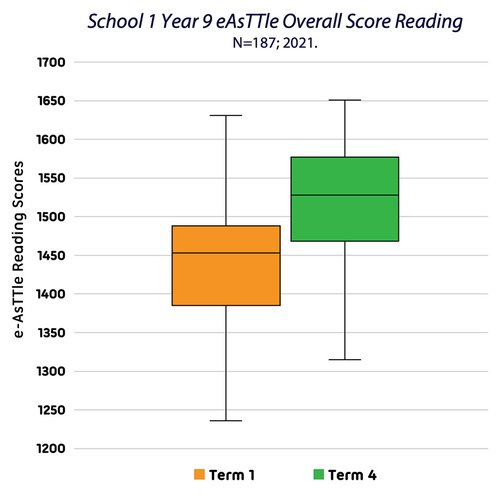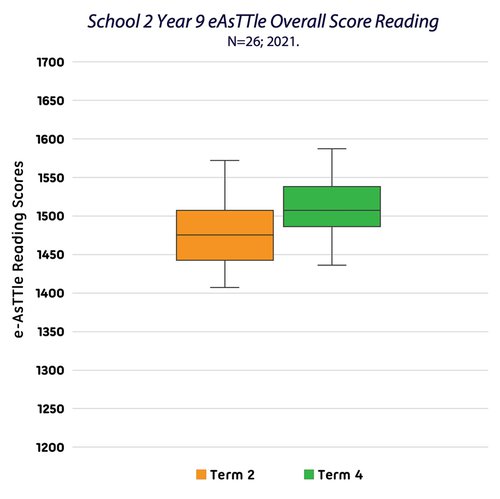2021 success for all: Highlights from our work in two BOP secondary schools
Reflecting on an unsettled 2021, highlights for us here in the Bay of Plenty were the results achieved by two secondary schools we are working with.
The first secondary school is in a small urban area. The school population is 65% Māori, with about 30% of the Year 9’s coming from small rural schools.

In this school every Year 9 student took part in the RT3T™ Intensives, which were implemented across two curriculum areas, English and Social Studies. After the Intensives, these teachers along with teachers from other curriculum areas were supported to continue to use the language and skills in their classes.
The impact of their hard mahi was reflected in the progress made by the students. At the end of the year the Year 9 averages matched the national averages for NZ students in eAsTTle Reading. Given that at the start of the year their averages matched those achieved at the middle of Year 7, this was a huge achievement gain for both Māori and non-Māori students.
The second school is one in a larger urban area. 2021 was the first year that they had implemented RT3T™.

In this school we worked intensively with teachers and school leaders to ensure that all aspects of the implementation were a great fit for the unique organisation of this school. RT3T™ was implemented in two Year 9 classes. Both classes had been described as having large numbers of students with competitive personalities who teachers felt would find it difficult to work in teams. When RT3T™ was commenced, one of the first things that the teachers noticed were the improvements in behaviour and overall tone of both the classes. This improvement was so striking that one teacher commented part way through the Intensives, that they didn’t need assessment data, they already considered RT3T™ to be a success.
Due to Covid interruptions, we were unable to gather post-RT3T™ data for the second class. However, the results for the first class showed gains equivalent to approximately 18 months. Students’ average score at the start of year was equivalent to the middle of Year 8. By the end of the year their average scores matched the reported averages for the end of Year 9.
We’re looking forward to continuing our involvement with both of these schools this year, with the first school having a focus on integration across all subjects and year levels, and the second school having a focus on implementing RT3T™ across all the Year 9’s and 10’s.
The teachers at the smaller school saw RT3T™ as an important strategy to help prepare their students for the new Literacy requirements coming in 2023. HOD Eng sees strong parallels between RT3T™ and the skills being assessed in the Literacy assessment
This was an amazing result, especially given the interruptions and stress of another Covid year.
Tags:
rural
EasTTle
COVID-19
secondary school
2021
urban
RT3T
Y9
reading
Maori

